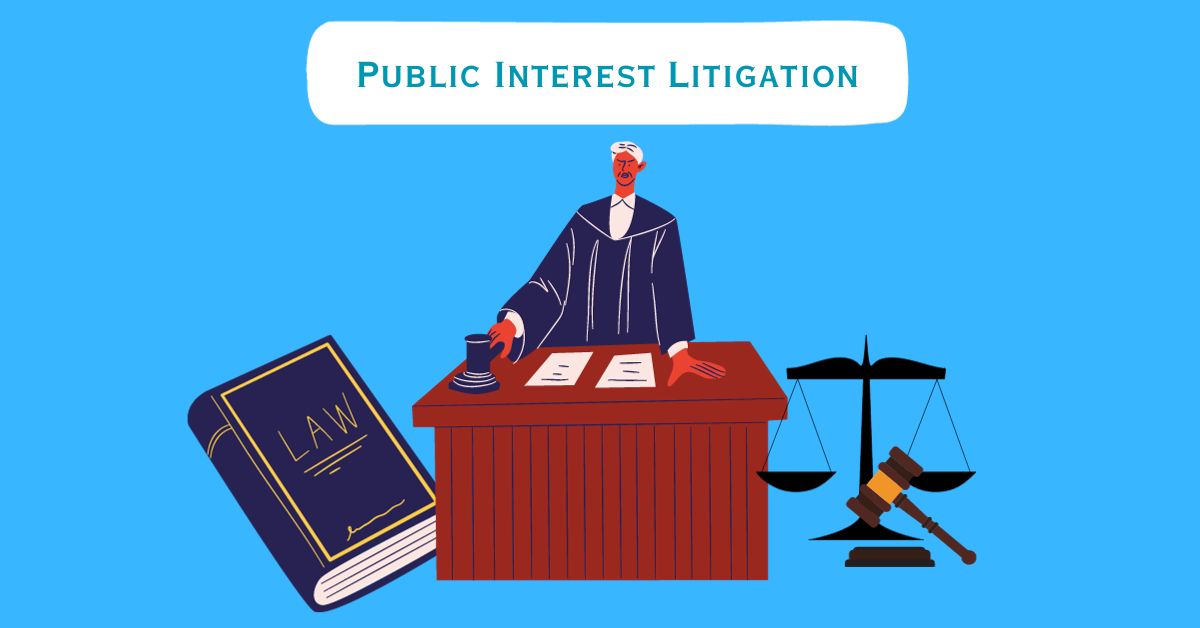Introduction
Public Interest Litigation (PIL) is a legal mechanism that allows individuals or organizations to approach the court for the protection of public interests 1. It is a potent tool for enforcing the legal obligation of the executive and the legislature. The chief objective behind PILs is ensuring justice to all and promoting the welfare of the people. It is generally used to safeguard group interests and not individual interests.
Public Interest Litigation at District Level
At the district level, similar remedies are available against public nuisances and other wrongful acts affecting the public at large. Section 91 of the Civil Procedure Code (CPC) provides that in case of a public nuisance or other wrongful acts affecting or likely to affect the public, a suit for declaration and injunction or for other such relief as may be appropriate in the circumstances of the case may be instituted 2.
Filing a PIL at District Level
Any two or more persons, with the leave of the court, can file a suit for declaration, injunction, or any other relief as may be appropriate in case of any public nuisance or any other wrongful act affecting or likely to affect the public 2. Such persons are not required to show any special damage caused to them by reason of such public nuisance or other wrongful acts.
Public Nuisance and Remedies
Public nuisance has been declared a crime under Section 268 of the Indian Penal Code. Public nuisance occurs when a person commits an act that causes annoyance, or injures or threatens to injure the rights of the general public, with respect to health, safety, morals, convenience, or welfare of the general public.
Section 133 of the Criminal Procedure Code (CrPC) empowers the District Magistrate/Sub-Divisional Magistrate/other Executive Magistrate especially empowered by the State Government on receiving the report of police officers or other information and taking such evidence as he thinks fit, removal of any unlawful obstruction or nuisance from any public place or from any way, river or channel.
Relevant Judgments
There have been many significant judgments related to Public Interest Litigation (PIL) in India over the years. Some of the most notable ones include:
- S.P. Gupta v. Union of India (1982): In this landmark case, the Supreme Court of India recognized the importance of PIL as a means to ensure access to justice for marginalized and disadvantaged sections of society 1.
- Bandhua Mukti Morcha vs. Union of India (1984): This case dealt with the exploitation of bonded laborers and was the first PIL filed by an NGO 2.
- UFLEX LTD. vs. GOVERNMENT OF TAMIL NADU & ORS. (2021): This case underscored the need to guard against the misuse of PIL for personal or political gain 3.
Conclusion
Public Interest Litigation at the district level provides an effective mechanism for the redressal of public grievances. It empowers the common man to approach the court for the protection of public interests. It is a potent tool for enforcing the legal obligation of the executive and the legislature, ensuring justice to all, and promoting the welfare of the people.
Relevant Provisions of Law
| Law | Provision | Description |
|---|---|---|
| Civil Procedure Code (CPC) | Section 91 | Provides for the filing of a suit in case of a public nuisance or other wrongful acts affecting or likely to affect the public 2 |
| Indian Penal Code (IPC) | Section 268 | Declares public nuisance as a crime |
| Criminal Procedure Code (CrPC) | Section 133 | Empowers the District Magistrate/Sub-Divisional Magistrate/other Executive Magistrate to remove any unlawful obstruction or nuisance from any public place or from any way, river or channel |














